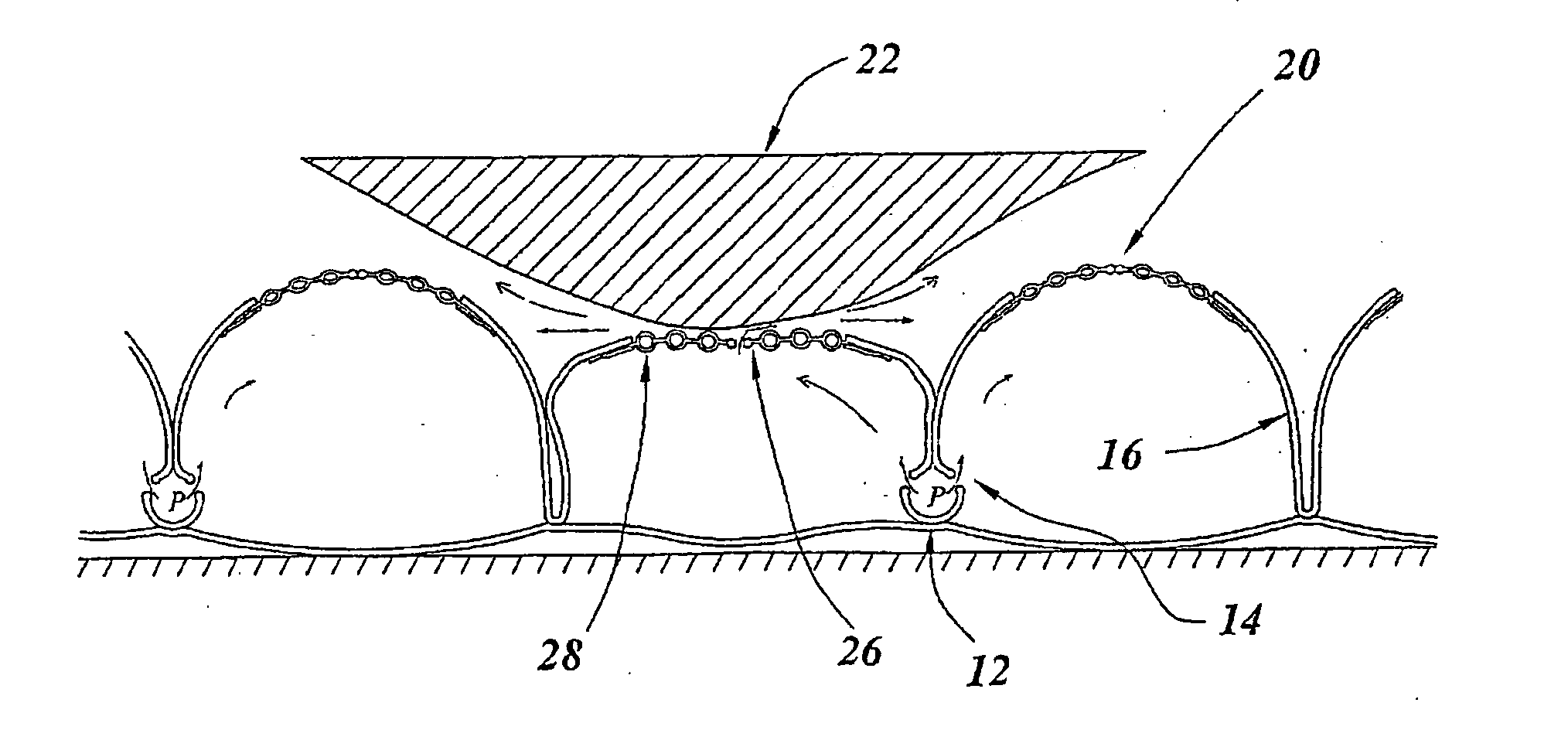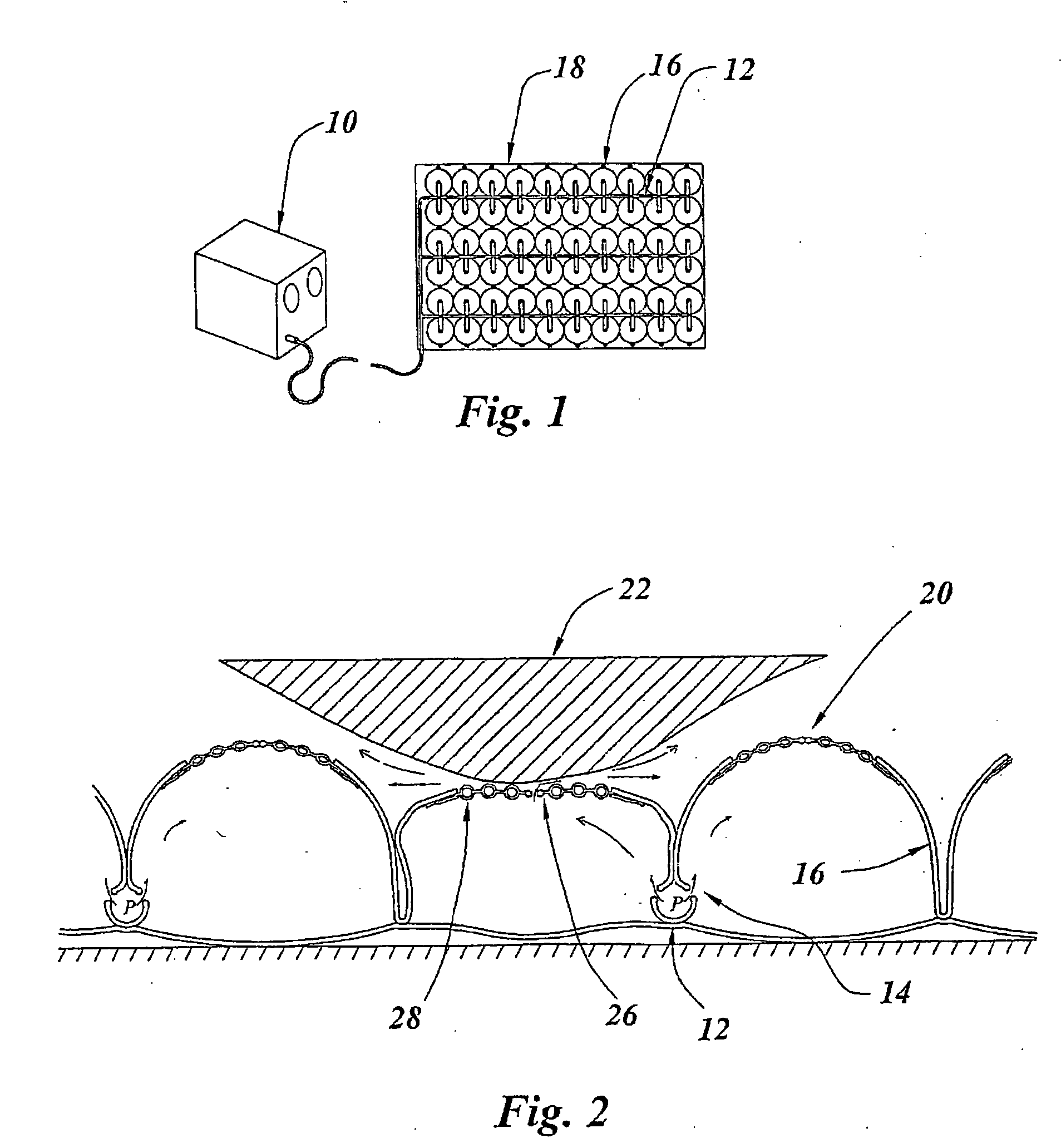Smart Decubitus Mat
- Summary
- Abstract
- Description
- Claims
- Application Information
AI Technical Summary
Benefits of technology
Problems solved by technology
Method used
Image
Examples
Embodiment Construction
[0026] With reference to FIGS. 1 and 2, a remote air supply 10 supplies air at a pressure of 0.04-0.104 bar (0.5 to 1.5 psi) to an air pressure supply manifold which branches into individual air supply lines 12. Metering orifices 14 connect the air supply lines 12 with individual cells or pockets 16 of a decubitus mat 18. The cells or bladders 16 are preferably on the order of 2.5-10 cm in diameter when inflated and are constructed of a flexible elastomeric material.
[0027] The mat including the cells is preferably made of a membrane material or injection-molded materials such as vinyl. The mat can be fabricated by joining a rubber septum or a polymer valve to a membrane bladder. Membrane materials can be molded to make complex membrane and non-membrane assemblies, rubber septums can be co-molded into injection moldings, or sheet stock membrane material can be heat sealed to form the chambers.
[0028] A polymeric sensor and vent 20 is mounted at the top of each cell. Preferably, the ...
PUM
 Login to View More
Login to View More Abstract
Description
Claims
Application Information
 Login to View More
Login to View More - R&D
- Intellectual Property
- Life Sciences
- Materials
- Tech Scout
- Unparalleled Data Quality
- Higher Quality Content
- 60% Fewer Hallucinations
Browse by: Latest US Patents, China's latest patents, Technical Efficacy Thesaurus, Application Domain, Technology Topic, Popular Technical Reports.
© 2025 PatSnap. All rights reserved.Legal|Privacy policy|Modern Slavery Act Transparency Statement|Sitemap|About US| Contact US: help@patsnap.com



